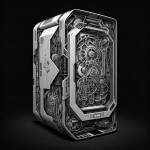[ad_1]
The European Patent Workplace (EPO) has once more rejected Dr. Stephen Thaler’s patent software that tried to call his synthetic intelligence system DABUS as an inventor. The EPO analyzing division’s determination reinforces the foundational precept that inventors should be pure individuals underneath European patent legislation. Article 81 of the European Patent Conference (EPC) requires a compulsory designation of inventor, and in accordance a previous precedential determination that went in opposition to Thaler, the inventor “should be a pure particular person.” The analyzing division emphasised that this requirement stems from the interconnection between Article 81 EPC (designation of inventor) and Article 60(1) EPC (proper to European patent).
Article 81: Designation of the inventor — The European patent software shall designate the inventor. If the applicant isn’t the inventor or isn’t the only inventor, the designation shall include a press release indicating the origin of the correct to the European patent.
Article 60: Proper to a European patent — (1) The fitting to a European patent shall belong to the inventor or his successor in title. . .
After all, neither of those articles expressly state that the inventor should be human, however the implication from Article 60(1) particularly is that the inventor is somebody with the aptitude of holding title.
Docs:
The EPO’s Authorized Board of Enchantment beforehand strengthened this interpretation in its December 2021 determination (J 8/20 linked above) dismissing Thaler’s enchantment. In that call, the Board defined that the time period “inventor” underneath the EPC should be interpreted based on its atypical which means – “an individual who invents” – and located no foundation for departing from this plain language interpretation. Whereas acknowledging that AI-generated innovations could also be patentable underneath Article 52(1) EPC, the Board held that this doesn’t change the necessities for inventor designation and origin of rights. The Board rejected each Thaler’s fundamental request (designating DABUS as inventor) and his auxiliary request (stating no inventor however claiming rights as DABUS’s proprietor), discovering that neither complied with Articles 81 and 60(1) EPC. Notably, the Board decided that even for AI-generated innovations, a press release explaining the origin of patent rights should determine a sound authorized foundation underneath Article 60(1) EPC – both inventorship by a pure particular person or succession from such an inventor. Merely proudly owning an AI system that created an invention was deemed inadequate to determine succession rights underneath the EPC.
The most recent determination walks by way of the notion that DABUS itself was initially listed because the inventor. When that failed, Dr. Thaler tried varied various approaches, together with stating he was “unable to determine the inventor” and later claiming inventorship “by advantage of being the proprietor of the AI system.” Every try was rejected as a result of the purposes contained internally contradictory statements about inventorship. The analyzing division defined the contradiction clearly: “Within the current case the Addendum and the amended description contradict the assertion filed in Type 1002, making the designation of inventor unclear, and never permitting the analyzing division to determine who’s designated as inventor (himself or the unreal intelligence system DABUS) and whether or not the applicant has the correct to the invention.” This ambiguity was deadly to the applying underneath Article 81 EPC. Maybe most notably, the analyzing division rejected the applicant’s argument that Rule 19(2) EPC (which states that the EPO doesn’t confirm the accuracy of the inventor designation) ought to restrict their evaluation to easily checking whether or not a human is known as. The division defined that “In accordance with Article 81 and Rule 19(1) EPC, the applicant should designate the inventor and based on Article 97 EPC the applying as an entire should meet the necessities of the EPC.”
If Thaler merely named himself as inventor, the entire dispute would seemingly finish as a result of the EPO doesn’t examine whether or not the inventorship claims are literally appropriate. In a inventive authorized argument, Dr. Thaler highlighted his US responsibility of candor as a cause why he can not personally declare inventorship. Underneath US patent legislation, candidates have an ongoing responsibility of candor to the USPTO requiring disclosure of all materials data associated to patentability, together with correct inventorship data. Violations of this responsibility can result in extreme penalties, probably rendering a patent unenforceable underneath the inequitable conduct doctrine. Thaler’s argument instructed that forcing him to call a human inventor for the EPO would place him in an unimaginable place – both violate his US responsibility of candor by making a false inventor declaration there, or fail to acquire European patent safety by in truth disclosing DABUS because the inventor.
The EPO Board firmly rejected this argument, holding that “Any duties that the applicant could have in the direction of different authorities as regards home purposes are unbiased of the evaluation of the applying for compliance with the necessities of the EPC.” This displays a elementary precept that every patent system operates independently based on its personal legal guidelines, even when analyzing the identical invention. Obligations underneath one system can’t be used to switch or circumvent the necessities of one other. On the similar time, it’s value noting that the assorted nationwide and worldwide patent techniques are a part of a singular worldwide cooperative system. This cooperation happens at a number of ranges – from bilateral workplace preparations just like the Patent Prosecution Freeway to foundational treaties just like the Paris Conference, Patent Cooperation Treaty (PCT), and TRIPS Settlement that create a coherent worldwide framework for patent safety.
[ad_2]
